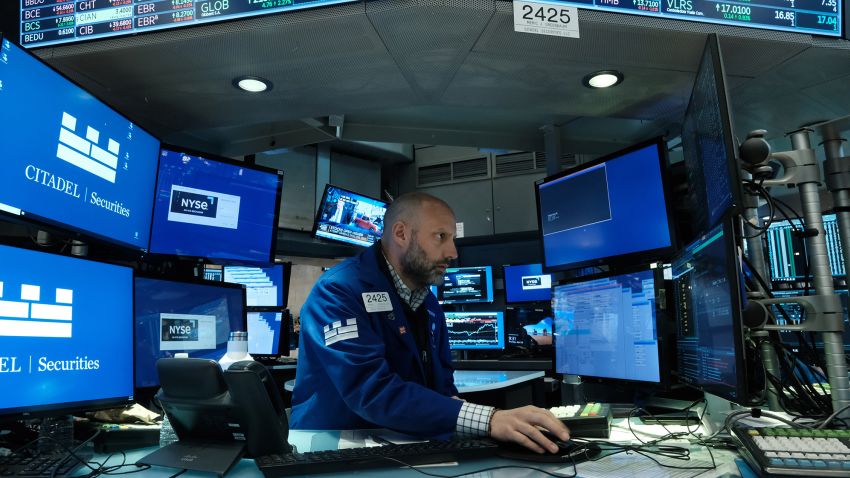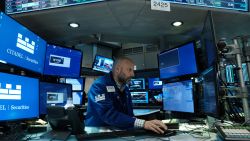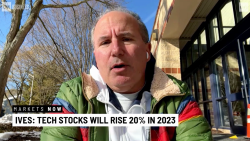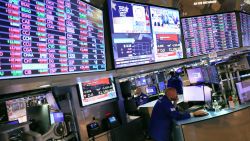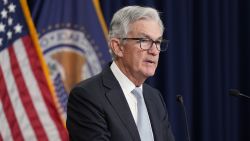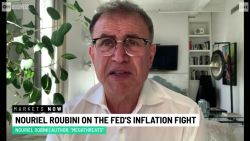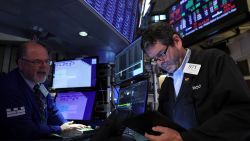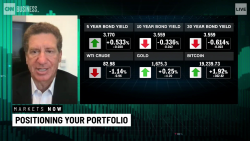The S&P 500 fell more than 13% between January and April of this year. That’s the worst four-month start to a year since 1939, when longtime legendary investor Warren Buffett was just nine years-old.
Comparing today’s stock market to 83 years ago isn’t an entirely apples-to-Apple comparison — for one, the S&P was made up of only 90 companies back then. But it has clearly been an abysmal first third of the year for investors from any reference point. The Dow was down 9% through April and the tech-heavy Nasdaq plummeted 21%.
Stocks finished higher on a wild day of trading Monday. The Dow rose 84 points, or 0.3%, after falling more than 525 points earlier in the session. The S&P 500 increased 0.6% while the Nasdaq gained 1.6%.
There is an old Wall Street adage that many investors “sell in May and go away.” It’s a pithy reference to the theory that bullish traders take a break during the summer and early autumn months and that stocks will typically fall until just before the winter holidays.
But this year the big sell-off may already have happened, as there appears to have been a fair amount of panic-induced stock selling recently. The CNN Business Fear & Greed Index, which measures seven indicators of market sentiment, was in Fear mode after briefly falling into Extreme Fear territory Monday.
Investors already have gone away … and might now come back
The market has plenty to worry about. The Federal Reserve is about to start raising interest rates more aggressively to fight inflation. Covid variant concerns and lockdowns in parts of China are spooking global investors. Then there’s Russia’s invasion of Ukraine. All of these factors have led to mounting recession worries.
Tech stocks have taken the biggest hit, with Amazon (AMZN), Facebook owner Meta and Netflix (NFLX) falling particularly hard. In fact, onetime investor darling Netflix (NFLX), which is down a stunning 68%, is the worst performer in the S&P 500 so far this year.
But there’s another pithy saying among traders: “Stocks climb a wall of worry.” Markets often rally in troubling times, partly because investors are looking ahead to a rosier future when all those fears diminish.
So is the worst for stocks still yet to come, or is the market finally close to bottoming? Some strategists see reasons for optimism.
“The markets are likely giving too little credence to supply chain progress, anti-inflationary policy moves and energy market resilience — all of which appear to be moving in the right direction and could improve sentiment and valuation in due course,” Robert Teeter, managing director of Silvercrest Asset Management, said in a note Monday.
Teeter added that the jobs market remains healthy and that earnings reports for the first quarter have mostly been “respectable” despite “several prominent stumbles,” mainly in tech.
“With much of the bad news out in the open and the prospect of better news in store, investors may be prudent to extend their time horizon as problem-solving takes hold,” Teeter added.
Stagflation worries persist, but so far, it’s all ‘flation’ and no ‘stag’
American consumers aren’t showing signs of being too worried just yet.
Although confidence and sentiment measures have been declining due to inflation concerns, retail sales remain strong, a phenomenon that some economists have dubbed “revenge spending” following two brutal pandemic years. And as far as corporate profits go, actions speak louder than words.
“After two years of Covid restrictions, people want to get out and have the means to do it. Household cash has exceeded debt for the first time in three decades,” said Linda Duessel, senior equity strategist with Federated Hermes, in a report last week.
“Corporate America is in great shape, too,” she added. “Profits and cash flow are at record highs. Profit margins are at or near record highs. S&P 500 earnings estimates keep rising. And corporate balance sheets are flush with cash.”
There are legitimate reasons to be worried that the combination of rising interest rates and higher oil prices could eventually lead to a recession or stagflation, the combination of slow growth and surging consumer prices. But we don’t appear to be there yet, which is good for investors.
What’s more, the whole selling in May and going away strategy has not held true over the past few years.
It’s a quaint idea to think that stocks should stumble in the summer because traders are supposedly hopping on the Jitney to the Hamptons and throwing their phones in the Atlantic Ocean. But last year, the S&P rose 10% between the start of May and the end of October.
According to data compiled last year by LPL Financial, the S&P 500 has averaged a 5.7% gain between May and October over the past decade. The only time the market fell in that period was in 2015.


